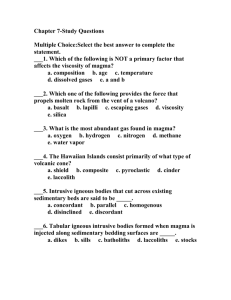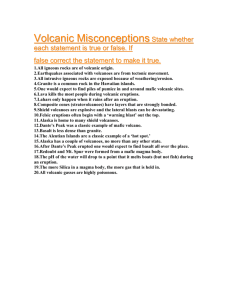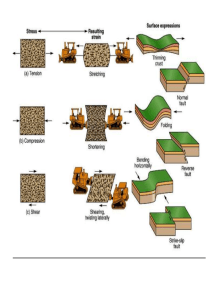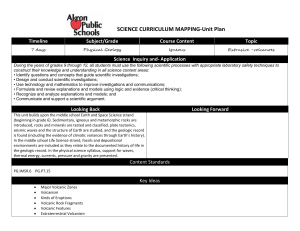Volcanoes and Other Igneous Activity
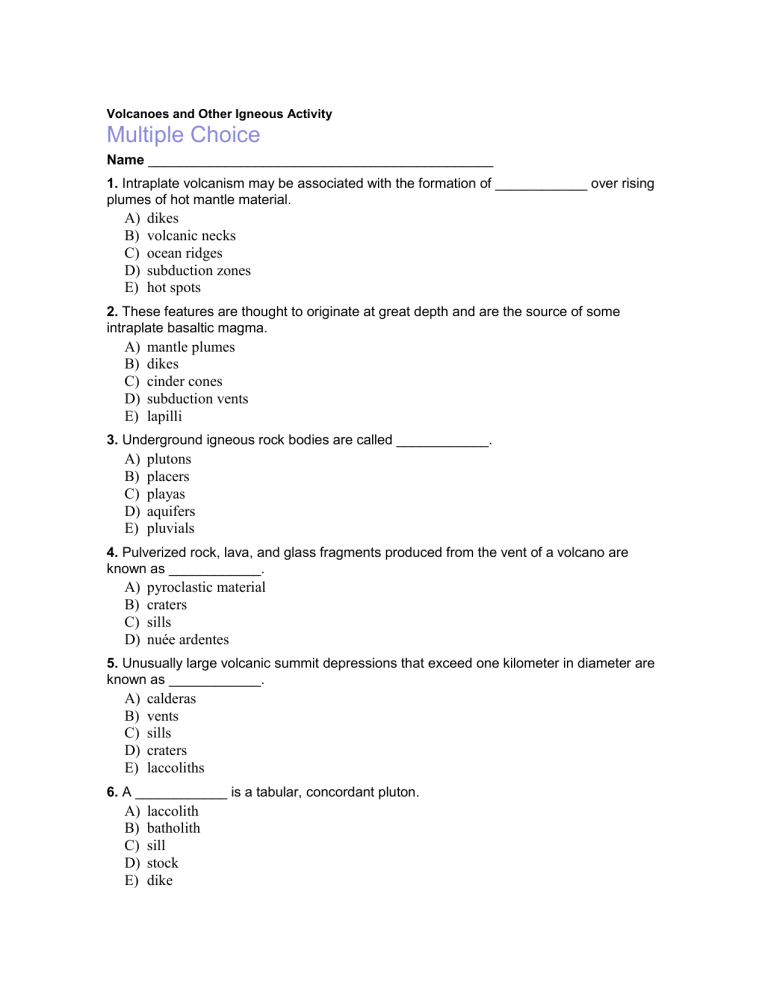
Volcanoes and Other Igneous Activity
Multiple Choice
Name _____________________________________________
1.
Intraplate volcanism may be associated with the formation of ____________ over rising plumes of hot mantle material.
A) dikes
B) volcanic necks
C) ocean ridges
D) subduction zones
E) hot spots
2.
These features are thought to originate at great depth and are the source of some intraplate basaltic magma.
A) mantle plumes
B) dikes
C) cinder cones
D) subduction vents
E) lapilli
3.
Underground igneous rock bodies are called ____________.
A) plutons
B) placers
C) playas
D) aquifers
E) pluvials
4.
Pulverized rock, lava, and glass fragments produced from the vent of a volcano are known as ____________.
A) pyroclastic material
B) craters
C) sills
D) nuée ardentes
5.
Unusually large volcanic summit depressions that exceed one kilometer in diameter are known as ____________.
A) calderas
B) vents
C) sills
D) craters
E) laccoliths
6.
A ____________ is a tabular, concordant pluton.
A) laccolith
B) batholith
C) sill
D) stock
E) dike
7.
Basaltic lava tends to be ____________ fluid than rhyolitic (granitic) lava.
A) less
B) more
8.
Highly viscous magmas tend to impede the upward migration of expanding gases, which often results in ____________ eruptions.
A) relatively quiet
B) very slow
C) false
D) reverse
E) explosive
9.
The most violent type of volcanic activity is associated with ____________.
A) shield cones
B) sills
C) cinder cones
D) intermediate cones
E) composite cones
10.
Which one of the following is NOT a factor that determines the violence of a volcanic eruption?
A) amount of dissolved gases in the magma
B) temperature of the magma
C) the magma's composition
D) size of the volcanic cone
11.
The most abundant gas produced during Hawaiian eruptions is ____________.
A) chlorine
B) water vapor
C) nitrogen
D) oxygen
E) carbon dioxide
12.
The area of igneous activity commonly called the Ring of Fire surrounds the ______.
A) Pacific Ocean
B) Coral Sea
C) Sea of Japan
D) Atlantic Ocean
E) Indian Ocean
13.
A magma's viscosity is directly related to its ____________.
A) silica content
B) volcanic cone
C) color
D) age
E) depth
14.
Eruptions of fluid basaltic lavas, such as those that occur in Hawaii, tend to be _____.
A) relatively quiet
B) explosive
C) extremely violent
D) unpredictable
E) none of the above
15.
In general, an increase in the confining pressure _______ a rock's melting temperature.
A) stabilizes
B) increases
C) decreases

